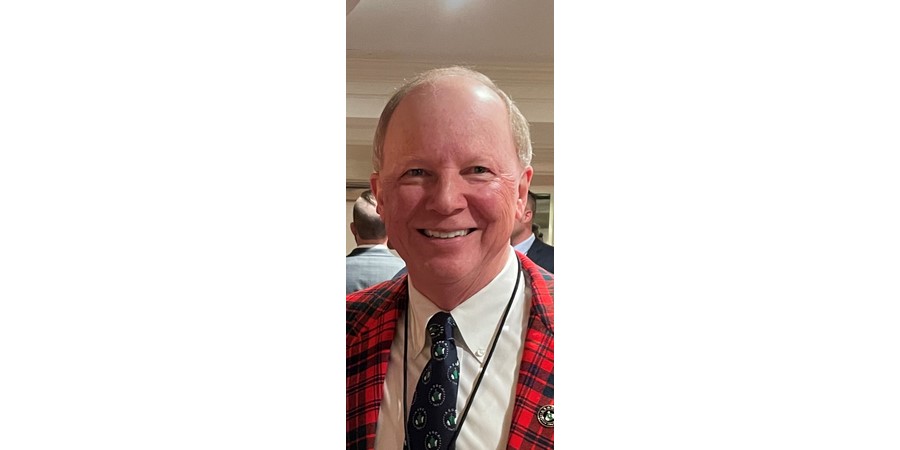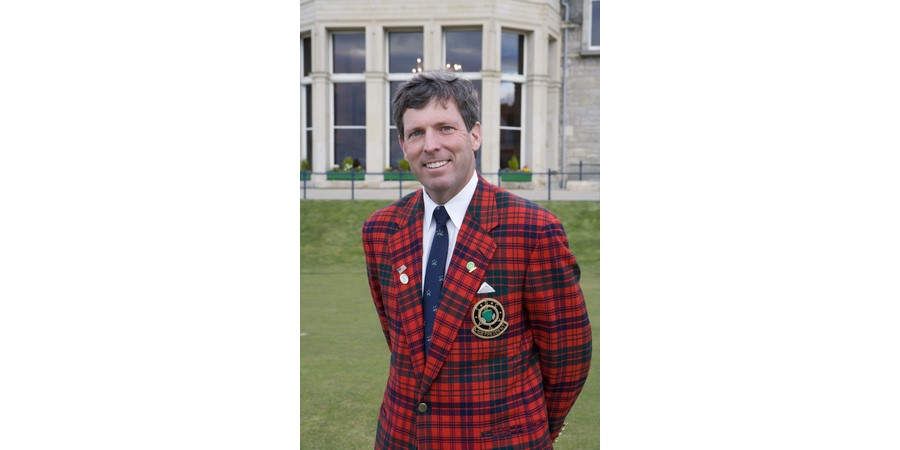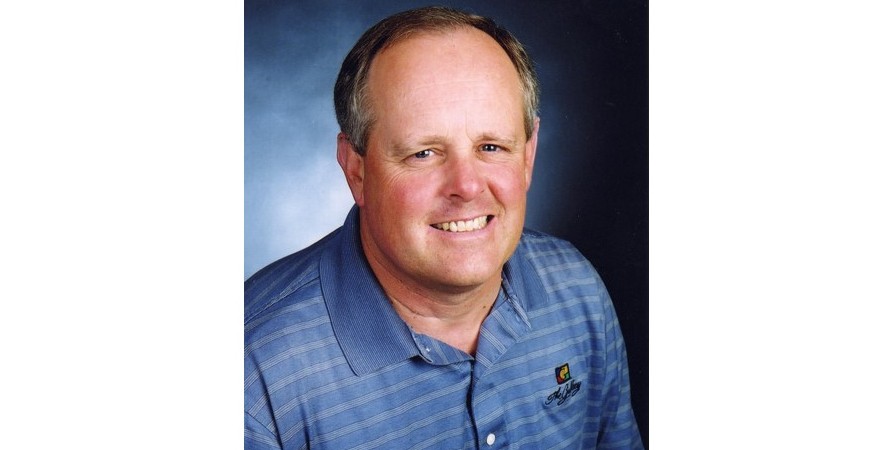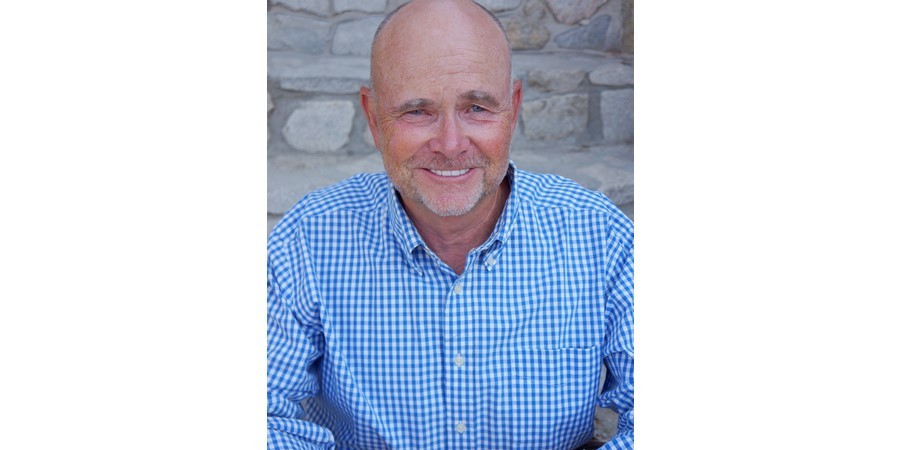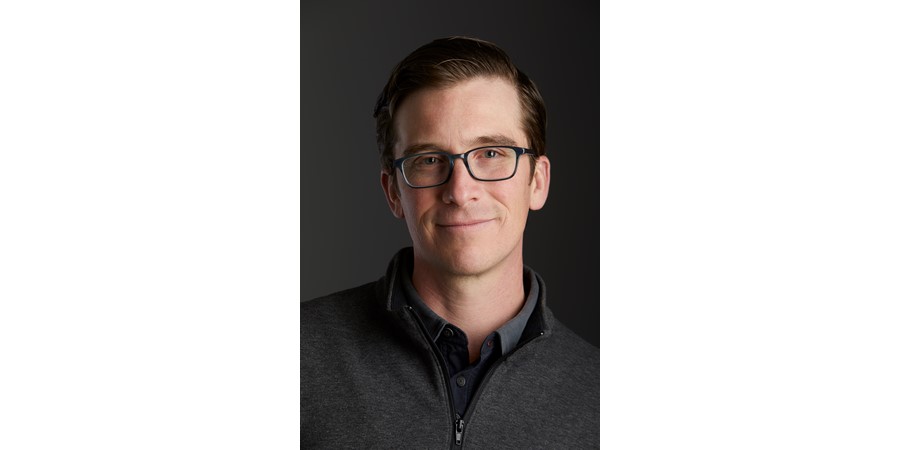Part 1
The North Course at LACC has been called “a course within a course.” This would provide elasticity in how holes are prepared for play between different days. How much of this technique have you included with your own design efforts, and can you cite one good example of your efforts in doing so?
JOHN FOUGHT: I love and want my courses to have variety in their design. I did a hole in Minnesota that can be played at 310 but also 510 and it’s the same hole.
It is fun to see guys think their way around the golf holes even when we change tee or hole locations. This is important for championship golf.
MARK FINE: Most of my design efforts are focused on restoring or renovating existing courses. That said, I am always trying to build in variety and interest as well as fun and challenge for a wide range of golfers who will play there.
On most well-designed golf courses, it is possible to make the course fun for the higher handicapper while at the same time create challenging and thought-provoking design for the scratch player.
Incorporating ground game options as well as a balanced use of a variety of hazards along with multiple teeing locations are a few ways this can be accomplished.
We recently completed a renovation along with some restorative work of Bethlehem Golf Club, an old William Gordon design in Bethlehem, PA. The course is now much more playable as well as challenging for a wider range of golfing abilities.
JEFF DANNER: We employ this technique whenever possible to attract new players and cater to golfing clientele with varied needs and desires for what they want to experience through the game. A great example is our work in Park City, where we are just finishing up the 18-hole par-3 Hills Course with yardages ranging from 110 yards up to 230 yards at almost 7,000 feet of altitude.
Sure, we have multiple teeing options to challenge or accommodate all players. Still, the natural elasticity exhibits itself in the routing where players can take “shortcuts” to right-size their golf experience by playing 6, 9, 12, 15, or 18 holes. Every design’s elasticity, flexibility, or adaptability is critical to long-term success.
BRUCE CHARLTON: We have always adhered to the “course within a course” philosophy as long as I have been working at RTJ II. The best example of this is Chambers Bay, where we purposely designed 8 holes where the par of the hole changed purely with the daily setup of the course.
BRIAN CURLEY: Multiple times I have incorporated two main concepts. First, from the back tee playing the member marker as a par-5 and the back marker as a par-4. Sometimes actually ahead of the member tee, thus reducing total par and creating a “scorecard within the scorecard.” And two, taking a short but unreachable par-4 and placing the tournament marker at a much more forward tee to make it reachable for most of the field.
The 17th at Mission Hills Blackstone in China was used this way for the World Cup of Golf. This, however, can be difficult as the gap in length at the tour level can be huge and asking driver of the average player leaves a much shorter club in the hands of the bombers.
It is easier to equalize the field with long, tight, three shot par-5s with water in play, not shorter holes. I have found that most pro tournament setups that must accommodate a large gallery and sponsor signage are reluctant to change around the tee areas and not very accepting of a big change in setup.
Thomas was a strong proponent in creating different angles of play to test the broadest range of players. Given the skillset of today’s elite players do playing angles still matter for them?
JEFF DANNER: Yes, angles still matter for the elite player, although not as much as they used to. Regardless, players will always consider the angle of attack because they still need to account for several factors, including wind, humidity, moisture, pin placements, well-placed hazards, spin, topography, etc. Angles may factor more into the amateur game. Still, at the elite level, you have to split hairs to gain a competitive advantage.
Tournaments are usually won by the player who exhibits the most mental toughness that given week. Regardless of “Moneyball” strategies and analytics employed to gain a competitive advantage, we can only partially account for or predict what happens between the player’s ears.
The player’s confidence and the temptation to be a hero or take dead aim and execute will always be in play, which is part of why golf is so exciting. It is a battle between one’s ego and self-discipline. Without angles, the inner struggle becomes much less, and so does the excitement of the game.
BRUCE CHARLTON: Absolutely. What has changed is the distances of all of these different angles of play. Perhaps in the modern day designs the different angles of play are set at stronger diagonals to create more variance in the distances required to successfully negotiate the choice of different angles of play made by the player.
BRIAN CURLEY: Sure, but their ability to hit shots so straight compared to days gone by brings the forced carry issue to a much lesser unknown. Today’s pro knows his carry yardage to an exact number and is not susceptible to the nuanced imperfections of clubs and balls from the Bobby Jones era.
There is little hesitation to pulling the trigger on very difficult shots and taking on angles that seem frightening to average players. Such situations do not even register a slight peak in the heart rate of today’s pro, unless difficult conditions suddenly factor in.
MARK FINE: Yes, angles definitely matter on a well-designed golf course even for the best players in the world. Paramount to how much they matter often starts with course conditions. The firmness of the turf, the length and thickness of the rough, the size, shape and contouring of the greens, as well as the orientation of the hazards all play a role in the relevance of angles. Another less talked about factor that impacts angles is the wind.
Furthermore, when we talk about angles of play, the discussion is usually around the angle left for the approach shot. While this is critical, just as important is the angle that remains if the approach shot is missed to a certain side/location. The wind can play a key role here as well.
At LACC, Thomas had over 100 feet of elevation change to work with along with a wide range of natural hazards including barrancas*, native grasses and scrub, sandy washes, and rugged undulating terrain. He factored all of this into his use of angles and this will present itself very clearly at the U.S. Open.
JOHN FOUGHT: They are very important for golf. When you look at a classic cape hole you have to choose how much to bite off on the tee shot.
Angles of play often test players ability to play different types of shots or to be bold or back off. Since the ball travels so far it has made some of these angles benign but it should be an element of any great course.
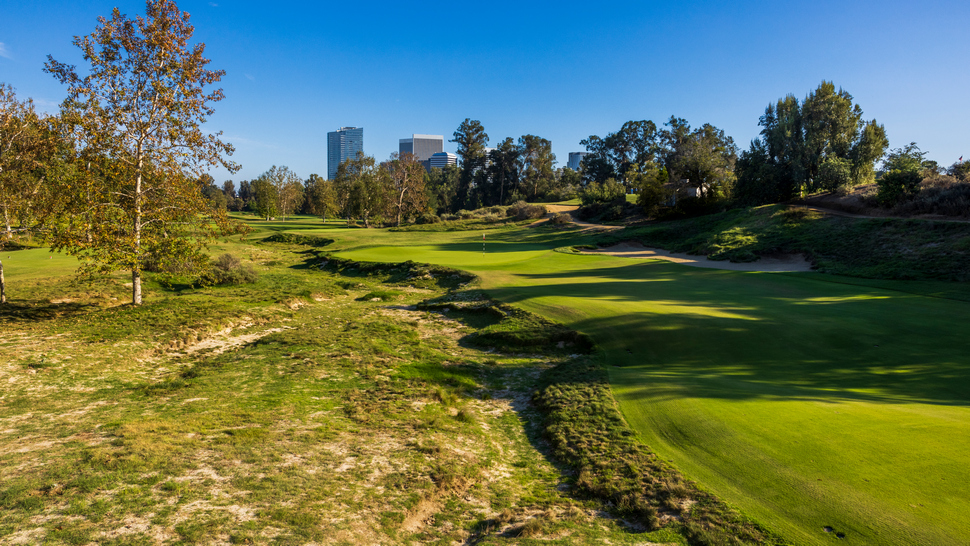
The preparation of the host site for the U.S. Open is a difficult task and the USGA has gone through a variety of peaks and valleys when doing so. If you had to offer one piece of key advice, what would you provide?
JOHN FOUGHT: Test the slope of the greens! At the speeds they want — +13 Stimpmeter you cannot have slopes in the cupping areas more than 2.5%.
I think they know that now but in the past, they ruined courses when they placed holes in poor locations. I also think they need more low mow collars to test players imagination.
MARK FINE: We touched on this a little before about including the architect as part of the course set up team to help “embrace the original intent of the architecture”. Most know that it is easy to make almost any golf course hard; just grow up the rough, narrow the fairways, make the greens rock hard
But a one-dimensional test is not all that interesting or exciting. The best advice I could offer would be to present a test that embraces the architecture of the golf course, hopefully with a balance of challenge, variety, temptation and decision making.
BRIAN CURLEY: My request as a viewing fan is to offer a set-up that allows for the most swings in scoring down the stretch.
Too often, U.S. Open venues are setup so that risk reward is seldom seen down the stretch, unlike every year at, say, The Players Championship. That often comes hand in hand with the lack of water hazards in most U.S. Open venues. But LACC and Gil’s terrific restoration of the barrancas* does offer some magnetic field that could attract the occasional errant ball and place some pressure down the stretch.
JEFF DANNER: My advice would be to maintain flexibility and be ready to adapt to unforeseen circumstances: weather, unique agronomic situations, and player performance, to name a few. Multiple plans should be ready for implementation, mainly for adjusting tee marker placement, course length, pin locations, green speeds, and irrigation schedules.
No doubt, these items are already being considered. Still, as noted, the ups and downs we’ve seen the USGA endure over the years mean everyone is continuously learning, and there is always room for improvement.
BRUCE CHARLTON: I think the stringent dimensions of fairway width often reduces shot making options for the best players of the game.
Go away from the 23-25 yard “alleys” of fairway and ask players to determine on their own what is the best angle of attack on a 40-yard-wide fairway. Bring players’ golf course management skills to the forefront.

How difficult is the task of balancing the need for daily playability and then upping the ante considerably when testing the finest players in the world?
BRUCE CHARLTON: Very, very difficult, in my opinion. But as the risk of using analytics like baseball, I think very specific metrics can be utilized for tee shot and fairway strategy for the best players in the world.
However, I think you can create a more “level playing field” between the best players in the world and the average and below average golfers by reducing the number of greenside bunkers and incorporating many areas utilizing tightly mown areas providing “short grass as a defense”.
BRIAN CURLEY: I feel like the question could be more pertinent if the goal is to not only challenge the best players but also restrict the ability for them to post very low scores. If allowing low scores is acceptable, then no real changes may be needed. This can be seen week after week on very difficult courses that are still ripped apart by the best of the best.
72 holes scores of 20-plus under par are easily posted every week on very long and difficult layouts. It is not until very narrow fairways and long rough are introduced that course set-ups are able to corral-in the low scores. So, the tried and tested solution of speeding up greens, narrowing fairways, and growing rough can always be implemented, then reverted to normal conditions the next week.
JOHN FOUGHT: It is not that difficult as long as you understand the dilemma with green speeds and expanded tee locations. I also think we need more options on the courses we design. Short holes are not necessarily easy.
JEFF DANNER: It can be a delicate balance, depending on how “daily playability” is defined for any one course. If you have a golf course with a typical setup closer to tournament conditions, the transition to championship conditions becomes much more manageable.
For example, I worked on a challenging renovation for a tournament venue a few years ago where their average green speed was maxing out at 8.5, or 9 on the Stimpmeter.
When discussing programming and setup for the tournament, we learned they wanted to achieve 13 or 14 for tournament play, “like Augusta”. On a mountainous, confined site, we only had so much room to enlarge the greens, which made the balance between everyday playability and challenging the best players very difficult.
Ultimately, we incorporated the right amount of character to keep the greens interesting for 8.5 or 9 green speeds without sacrificing fair yet challenging hole locations for the tournament.
MARK FINE: It can be very difficult and end up costly and not so much fun for the members. The best players in the world play a far different game then the average or even scratch player.
I have never been an advocate of designing/changing a course primarily to challenge the pros who show up to play for four days once every ten or fifteen years. If you can get away with the simple addition of some extra back tees, so be it.

LACC is hosting its first U.S. Open this week — what other club in the USA would you like to see host the national championship of American golf that has never done so before keeping in mind the logistics in staging such an event?
MARK FINE: No single course jumps out and I am hesitant to name a classic one that hasn’t been used as I wouldn’t want to see it changed just for the event.
However, since we are talking about George Thomas, he did once say that, “It is most important for the future of golf that every aid should be given to the building and upkeep of municipal courses because such will eventually become the greatest value to the game.” In that regard, adding another public track might be well worth considering.
JEFF DANNER: I would love to see the USGA set up a Pete Dye course for the U.S. Open, TPC Sawgrass, or the Ocean Course at Kiawah Island. We should also consider the Straits Course at Whistling Straits. Granted, the latter two have hosted other majors.
BRUCE CHARLTON: I have a list that I think that merit consideration for the U.S. Open: Cypress Point, Chicago Golf Club. National Golf Links, Seminole and San Francisco Golf Club.
JOHN FOUGHT: I know two that would work. First is Muirfield Village. I know the Memorial is played there but I think the US Open would be great. Second would be a course Tom Lehman and I built 20 years ago in Minnesota – Windsong Farm. The property is big, is golf only — no surrounding homes — and has the length and variety to test all levels of play at 7,600 yards – par 71.
BRIAN CURLEY: The obvious choices are Pine Valley and Cypress Point, and maybe National Golf Links. But these could never handle the number of people and associated concessions/ facilities/ corporate tents, etc., etc.
The June date limits many of the winter destinations of Florida, Palm Springs and Phoenix where temperatures could be intolerable. I would imagine that Bandon Dunes would be able to host on one of its courses or, perhaps some interesting composite course that creates plenty of gallery room as well as corporate villages.
It is somewhat remote but it is expansive and has the practice facilities so many older clubs lack. Certainly, the golf is epic and brings the goods as well as fantastic views. Maybe a Carnival Cruise ship floats in to bring a heap of instant hotel units just off the coast.
On a side note, and 100% true and real as a heart attack I was once asked by the secretary of a Chinese client, “What it would take to host the U.S. Open” at their courses? The dreamers are omnipresent!

The USGA has opted to go forward in the future with a “core four” of host clubs for the U.S. Open. They include Oakmont, Pebble Beach, Pinehurst #2 and likely Shinnecock Hills. Do you agree with this approach and would you add or delete any?
BRUCE CHARLTON: I am not a big fan of this approach although the courses mentioned are some of my favorites, especially Shinnecock and Oakmont. I believe using a variety of venues has long been a hallmark of the U.S. OPEN. I also believe that Winged Foot should be included in this core group of courses.
BRIAN CURLEY: I like it and believe it is a solid and varied selection. I do believe the LACC experience is going to enlighten many and quickly throw it into the topic of discussion.
I have great respect for great golf within urban environments and nobody beats LACC. The Beverly Hills setting is hard to beat for visuals.
JEFF DANNER: It is difficult to argue against or delete any of these four, but more geographic variety covering the entire United States would be nice. My Midwest needs some representation. For example, I would add Chicago Golf Club and another in the heartlands or western U.S.
MARK FINE: I like the idea of having several core courses and I love the four courses mentioned. Part of the aura of watching the greatest players play golf is seeing them play on some of the greatest designs in the world.
Furthermore, knowing these courses will be on-going hosts for the U.S. Open, gives them more license to evolve and make changes to accommodate the best players in the world.
JOHN FOUGHT: All of these courses are fabulous so it’s hard to not include them. But I think they should consider some of the newer courses as well.
The newer courses have better infrastructure, often on larger properties and will evolve into supreme tests if given the opportunity.
***
*barranca: a narrow, winding river gorge

Related: Matt Fitzpatrick fully focused on US Open defence despite confusion over merger
***
The Participants
Mark Fine
Graduated in 1982 from Drexel University with a B.S. degree in Commerce & Engineering. Following a successful business career which included being part owner/President of a global specialty products firm, he founded Fine Golf Design, Inc. in 2003 based in Allentown, PA. Fine’s background in golf includes over 30 years of study in golf architecture and design. He has a passion for the works of the “Golden Age” architects such as Ross, Mackenzie, Tillinghast, Watson, Raynor, and Flynn.
Actively lectures on the subject and his articles are featured in several leading golf publications. In 2006 he co-authored with Forrest Richardson a popular book with Superintendents and Greens Committees titled, “Bunkers, Pits and Other Hazards,” published by John Wiley and Sons, Inc. His field research includes playing and analyzing over 1,500 golf course designs around the globe including hundreds that have been recognized as the world’s best.
His firm, Fine Golf Design, provides a comprehensive range of golf course design and consulting services including Master Plan development, historic course restoration as well as renovation and redesign.
Bruce Charlton
Grew up in Iowa, where he took up golf at an early age and enjoyed a fine amateur career. Before graduating from the University of Arizona with a Bachelor of Landscape Architecture degree, he served as an assistant golf course superintendent at Manchester CC in Iowa.
Upon graduation, he joined the design firm of Robert Trent Jones II, where he has developed a number of outstanding designs, including Southern Highlands Golf Club in Las Vegas; Thunderhawk Golf Club in Lake County, Ill.; Bro Hof Slott Golf Club, near Stockholm, Sweden; and Chambers Bay Golf Course, University Place, Wash.
He currently serves as President and Chief Design Officer of the firm. Bruce is a Past President of ASGCA.
John Fought
Culminated a successful college golf career at Brigham Young University by winning the 1977 U.S. Amateur. After graduating with a degree in accounting, he turned pro, joined the PGA Tour the following year and won two events in 1979.
After several years, he turned to golf course architecture as a career, and in the late 1980s began working with Bob Cupp, eventually running a branch office in Portland, Ore. and serving as Cupp’s primary West Coast designer. In 1995 John started John Fought Design in Scottsdale, Ariz.
Some of his most recognized designs include The Gallery South Course in Tucson, Ariz.; Langdon Farms in Portland, Ore.; The Reserve Vineyards and Golf Club in Portland, Ore.; and Rush Creek in Minneapolis, site of a 1997 LPGA event.
Brian Curley
The Arizona-based golf course architect has been involved with a large resume of courses throughout the world. Raised in Pebble Beach, he developed a love for the game and its architecture at an early age caddying and working at Cypress Point and Pebble Beach Golf Links.
Began his career working with Pete Dye and his eventual business partner Lee Schmidt in the California desert on PGA West for the Landmark Land Company. An introduction to Mission Hills Golf Club in 1995 resulted in his long and successful list of courses in the Asian market, especially China where he created 25 courses for Mission Hills alone, many with Signature Tour pros but also under his own name.
He is a member of the ASGCA and a GOLF Magazine Top 100 panelist.
Jeff Danner
Is a Golf Course Architect with Richardson|Danner Golf Course Architects and is based in Mountain View, California. He has played a role in many award-winning new construction and renovation projects in the U.S. and Worldwide.
He and his partner, Forrest Richardson, recently renovated Anchorage Golf Course in preparation for the 2022 USGA’s U.S. Senior Women’s Amateur Championship. The first USGA Tournament held in the state of Alaska.
Has led or assisted in renovating several other tournament venues worldwide in association with other firms. Having worked in or traveled to over 30 countries, he has been exposed to various climates, cultures, and environments. Danner is one of only three golf course architects in the world to carry membership with both the American Society of Golf Course Architects (ASGCA) and the European Institute of Golf Course Architects (EIGCA).


